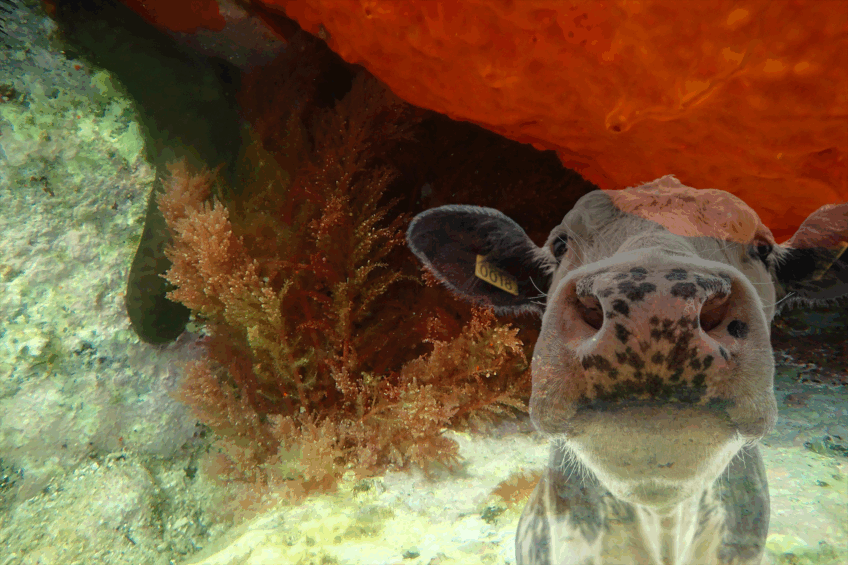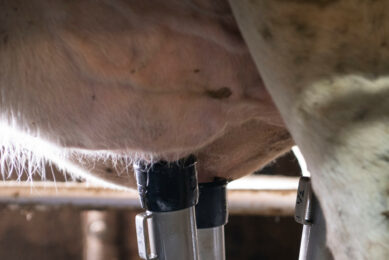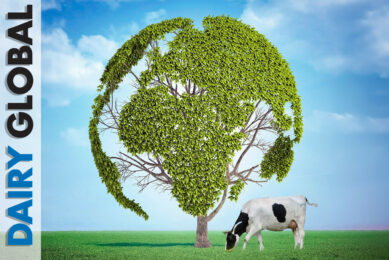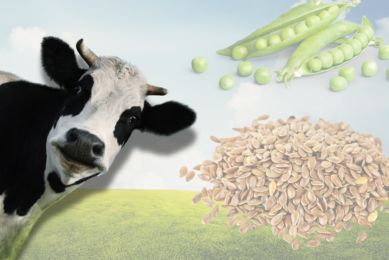Impact of seaweed additives on greenhouse gas emissions and milk production

Pan-European researchers have been studying the effects of feeding dairy cows seaweed mixtures on feed intake, methane emissions, milk production, and the mineral and fatty acid composition of the milk.
There has been growing research interest in the potential of macroalgae (seaweed) as a methane-suppressing feed supplement for ruminants; however, many seaweed species vary in their composition, which can have either beneficial or harmful effects.
So, the team, led by Professor Chris Reynolds, director of the Dairy Research Centre at Reading University, set out to determine the effects of feeding 3 mixtures of 3 seaweeds at levels within EU regulatory limits for rational iodine concentration on methane production and milk yield and composition of dairy cows.
Feeding treatments and methane monitoring with Holsteins
With support from scientists at the University of Hohenheim in Germany, the University of Aberdeen in Scotland, the University of Graz in Austria, and the Matis field site in Reykjavik, Iceland, the team looked at the effects of the mixtures on 40 lactating Holstein cows.
The cows were divided into 4 groups with 10 cows per group:
- Control (no seaweed) – a total mixed ration
- Mixture of Ascocphyllum nodosum (AN), Fucus vesiculosus (FV) and Asparagopsis taxiformis (AT) at 5:45:50 and 1.5kg/DM
- Mixture of AN and FV at 90:10 and 6.5kg/DM
- Mixture of FV and AN at 90:10 and 17.5kg/DM.
The cows were individually fed ad libitum in terms of dry matter intake (DMI) in free-stall housing. Treatments continued for 7 weeks, with daily measurements of milk yield and dry matter intake, and weekly measurements of milk composition.
Methane emission was estimated using 2 GreenFeed head chambers in weeks 5-7 of treatment. Milk mineral concentrations were measured in weeks 1-6 and milk fatty acid was measured in week 6.
Key feeding outcomes
Feeding the AN:FV and FV:AN mixtures had no effect on methane emission (g/d) or yield (g/kg DMI), whereas cows fed AT (0.075% of DM) in combination with AN and FV tended to have a lower methane emission (9%) and methane yield (12%) than cows fed the control diet and lower (20%) methane intensity (g/kg ECM) than cows fed the AN:FV mixture.
Cows fed all 3 seaweed mixtures had 1.7 to 2.2-fold higher milk iodine concentrations, which showed a week-by-treatment interaction, in that cows fed the AN:FV mixture had higher milk iodine concentrations in weeks 3 and 5 of the study.
Cows fed the AN:FV ration also had lower milk urea concentration, suggesting effects of AN or FV bioactive components on rumen protein degradation.
And the animals fed the AT:AN:FV mixture had lower concentrations of C18:3n6, and higher concentrations of C15:1 and C17:0, but there were no other effects of feeding seaweed on milk yield or composition.
Conclusion on feeding seaweed
In conclusion, feeding a relatively small amount of AT (0.75 g/kg diet DM) with AN and FV reduced methane emission and yield by 9% and 12%, respectively, and there was no effect of feeding mixtures of AN and FV without AT. Feeding a higher level of AN with FV (5.85 g/kg DM) reduced milk urea concentration, suggesting inhibitory effects of phytotannins or other bioactive components on protein degradation.
Join 13,000+ subscribers
Subscribe to our newsletter to stay updated about all the need-to-know content in the dairy sector, two times a week.










